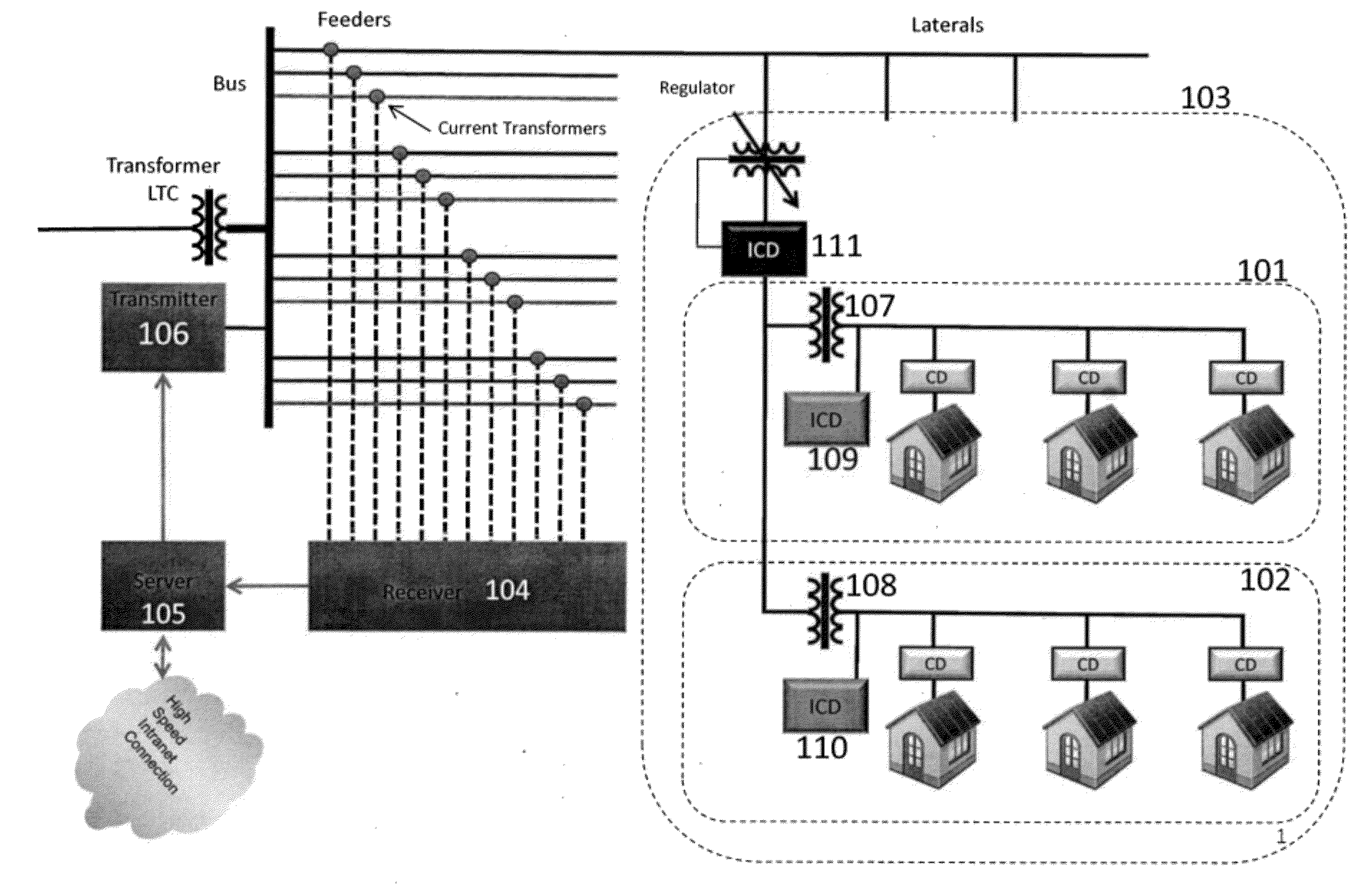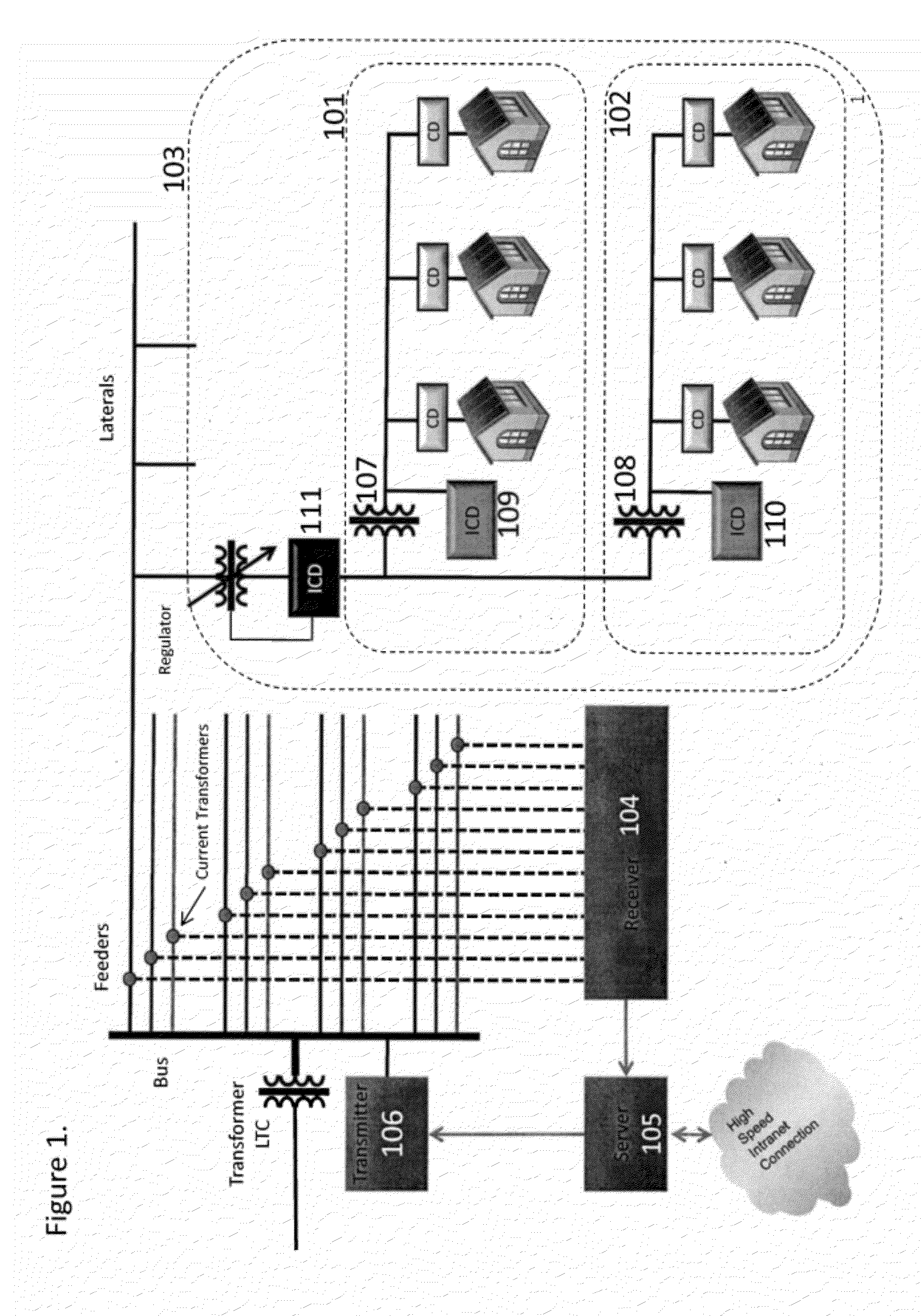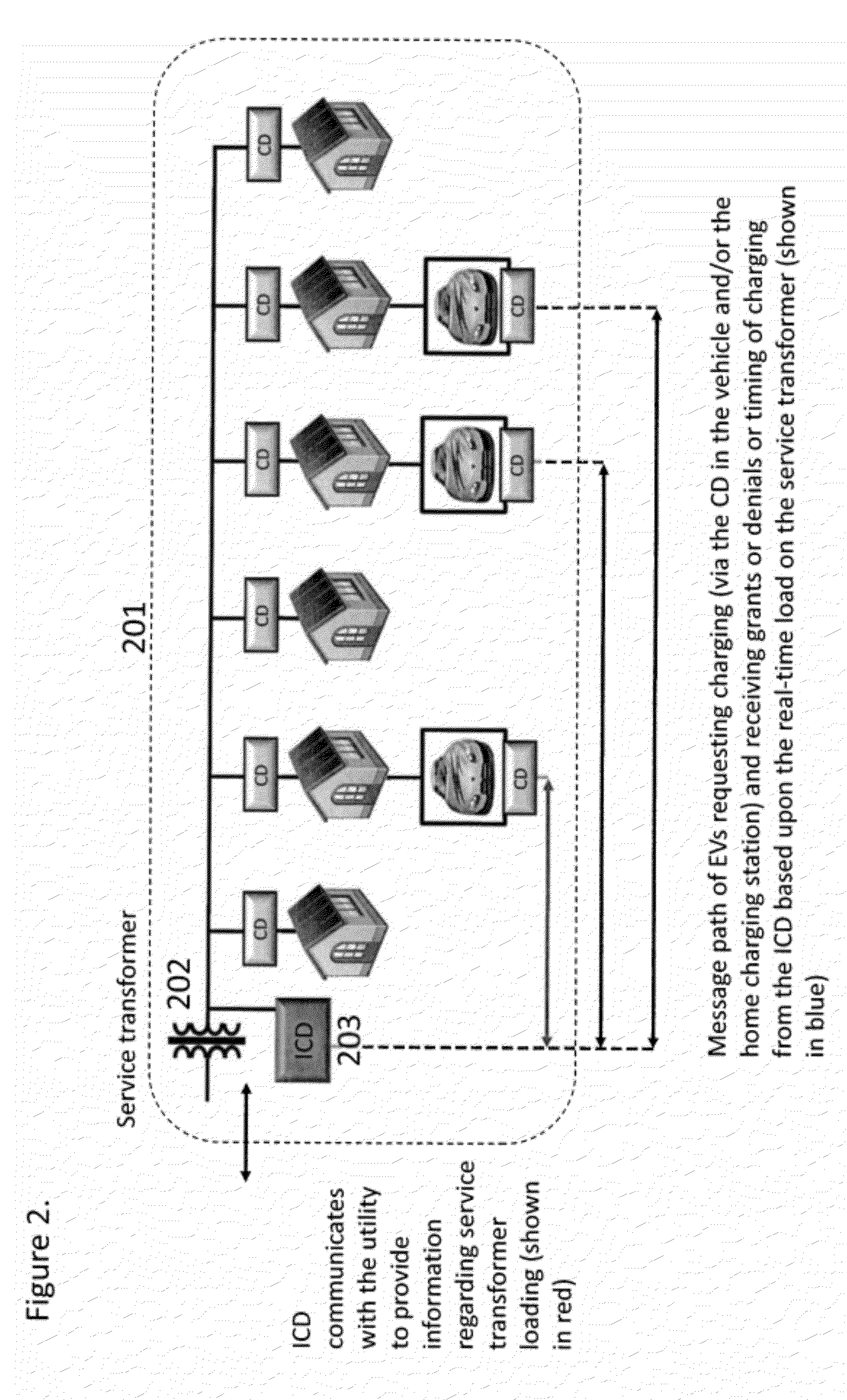System and method for single and multizonal optimization of utility services delivery and utilization
a utility and multi-zonal technology, applied in the field of utility service delivery and the use of distributed intelligence and networking, can solve the problems of inability to realize the possibility without, the majority of end points being slightly over-served, and the efforts to engage residential consumers in actively managing their own consumption have met with limited success, so as to reduce facilities and operational costs, improve the accuracy of models and optimizations, and reduce the cost of building rf mesh networks. the effect of prohibitively high cos
- Summary
- Abstract
- Description
- Claims
- Application Information
AI Technical Summary
Benefits of technology
Problems solved by technology
Method used
Image
Examples
Embodiment Construction
[0027]The present invention is directed generally toward utility service delivery and the use of distributed intelligence and networking in the optimization of utility service delivery, wherein it is beneficial and necessary to establish zones of optimization based on electrical schematic proximity (versus geospatial proximity) of loads on the electrical grid.
[0028]The invention comprises at least one data aggregation point, as shown in FIG. 1, said aggregation point comprising at least one server 105, at least one on-grid receiver 104, and an optional transmitter 106, together with at least one optimization zone. An optimization zone contains at least one intelligent communicating device (ICD) (109, 110, and 111). An optimization zone may additionally contain other optimization zones, a collection of one or more communicating devices (CDs) residing on the low-voltage side of the same electrical service transformer wherefrom said ICD derives its power, and one or more control device...
PUM
 Login to View More
Login to View More Abstract
Description
Claims
Application Information
 Login to View More
Login to View More - R&D
- Intellectual Property
- Life Sciences
- Materials
- Tech Scout
- Unparalleled Data Quality
- Higher Quality Content
- 60% Fewer Hallucinations
Browse by: Latest US Patents, China's latest patents, Technical Efficacy Thesaurus, Application Domain, Technology Topic, Popular Technical Reports.
© 2025 PatSnap. All rights reserved.Legal|Privacy policy|Modern Slavery Act Transparency Statement|Sitemap|About US| Contact US: help@patsnap.com



